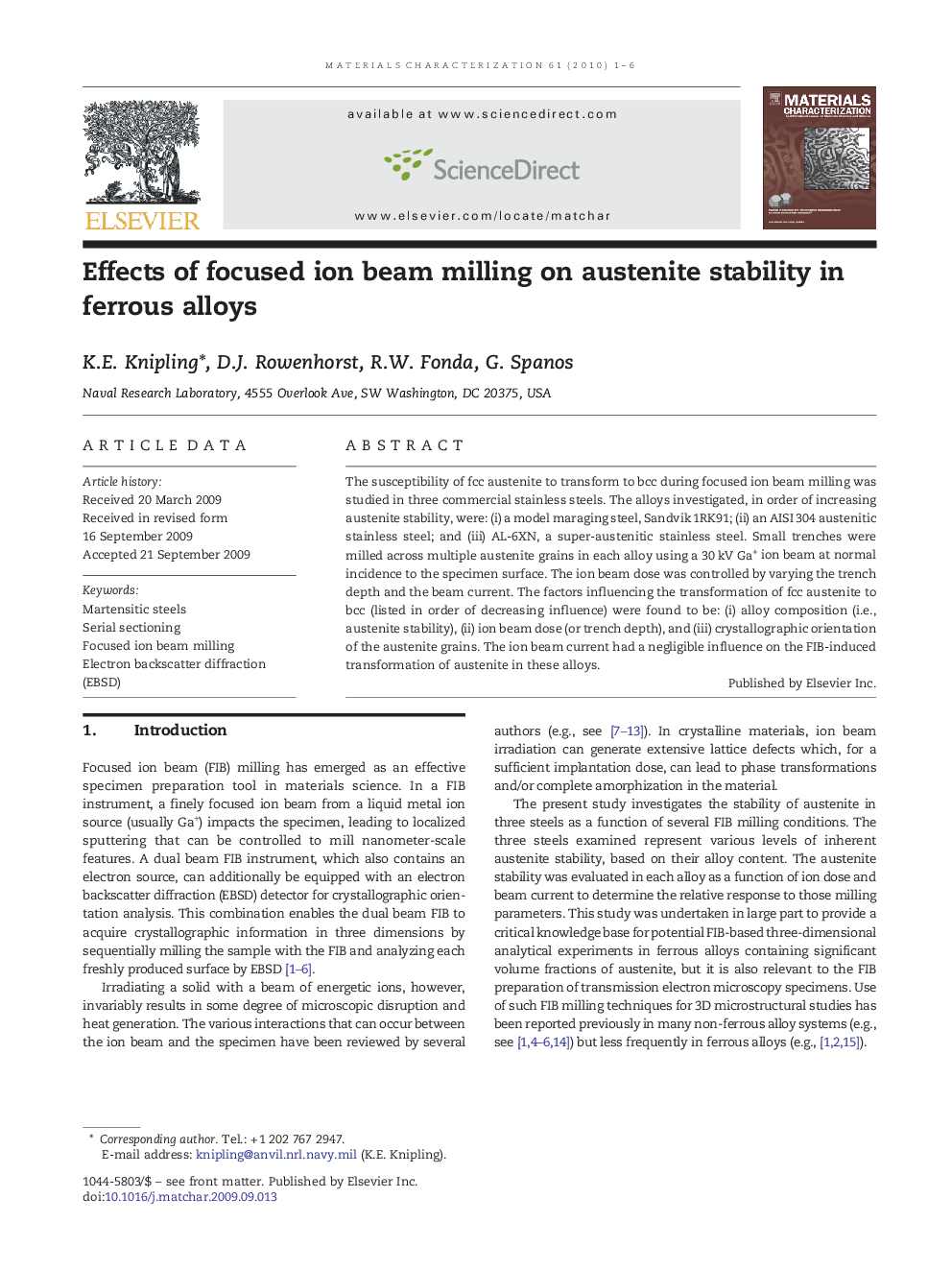| کد مقاله | کد نشریه | سال انتشار | مقاله انگلیسی | نسخه تمام متن |
|---|---|---|---|---|
| 1572523 | 1000686 | 2010 | 6 صفحه PDF | دانلود رایگان |

The susceptibility of fcc austenite to transform to bcc during focused ion beam milling was studied in three commercial stainless steels. The alloys investigated, in order of increasing austenite stability, were: (i) a model maraging steel, Sandvik 1RK91; (ii) an AISI 304 austenitic stainless steel; and (iii) AL-6XN, a super-austenitic stainless steel. Small trenches were milled across multiple austenite grains in each alloy using a 30 kV Ga+ ion beam at normal incidence to the specimen surface. The ion beam dose was controlled by varying the trench depth and the beam current. The factors influencing the transformation of fcc austenite to bcc (listed in order of decreasing influence) were found to be: (i) alloy composition (i.e., austenite stability), (ii) ion beam dose (or trench depth), and (iii) crystallographic orientation of the austenite grains. The ion beam current had a negligible influence on the FIB-induced transformation of austenite in these alloys.
Journal: Materials Characterization - Volume 61, Issue 1, January 2010, Pages 1–6